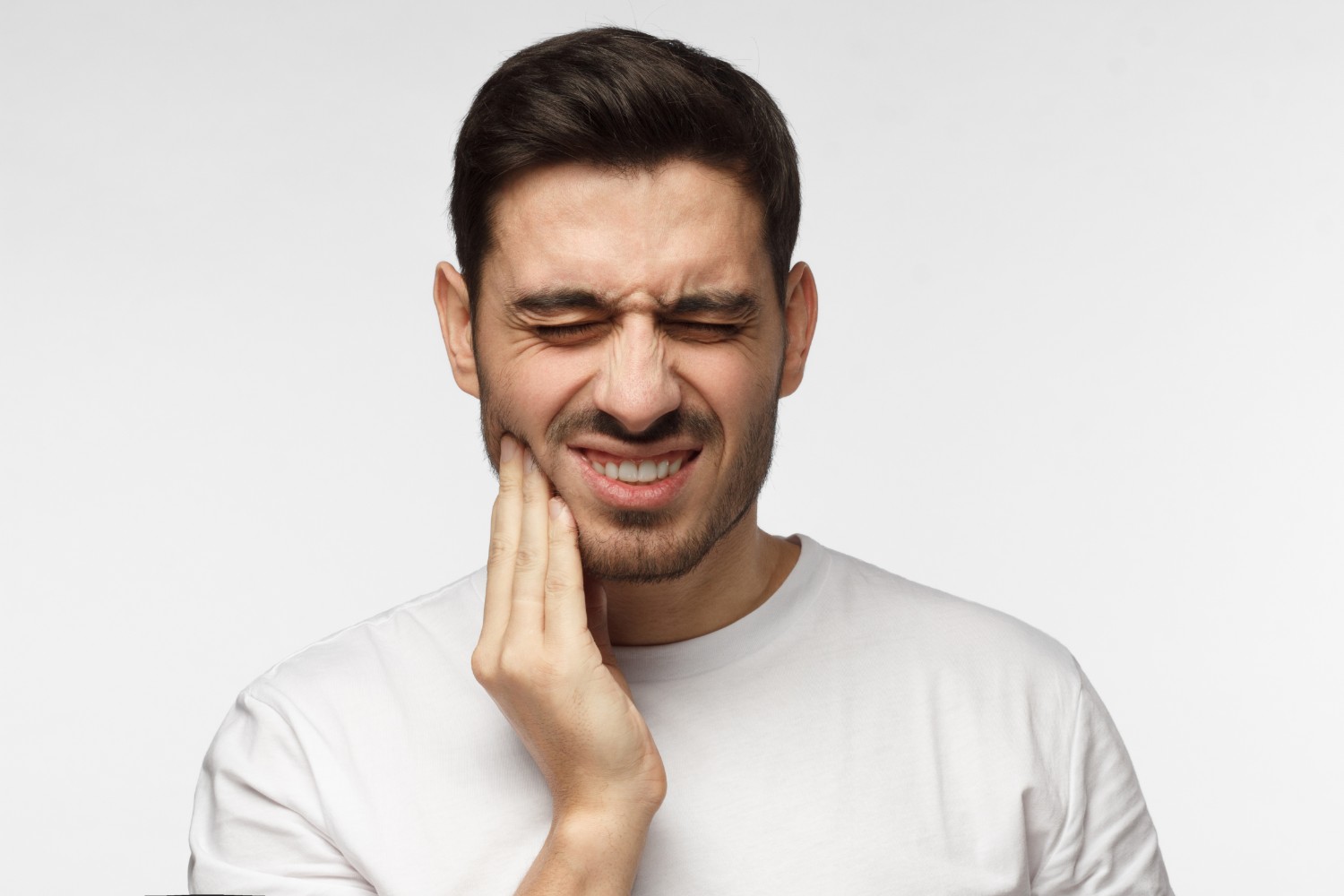Do you have chronic discomfort in your shoulder, neck or upper back, or frequently experience headaches, ear discomfort, or jaw pain? These could all be related to your temporomandibular joint (TMJ). At Kottemann Orthodontics we can help give you relief. There’s no reason to let TMJ keep you from living a full and happy life.
Symptoms and Diagnosis
At Kottemann Orthodontics, we see many patients who don’t sleep well or who have chronic pain but do not know what to do about it. They may not realize that the source of their problem is a misaligned jaw. If the cause of a TMJ disorder (TMD) is due to an improper bite, then orthodontics can be a great way to ease the symptoms associated with it.
It’s important to get an accurate diagnosis before your treatment begins. This can prove difficult because there’s not a universal way to identify TMJ disorders, because the pain associated with it may be caused by other issues. When you come in for a consultation, we’ll discuss your symptoms, do a physical exam, take X-rays and discuss your complete medical history. It will give us a clear idea of how to proceed after we put all of this together.
If you have TMD, you should eat food that does not require a lot of chewing, so that your jaw gets a chance to rest and heal.
Foods Not to Eat
Try to avoid foods that are:
- Too thick or wide and require you to open your mouth wide
- Chewy or sticky, like a caramel apple
- Hard or crunchy, like a hard roll, pretzels or raw carrots
- In large bites: if you can, cut your food into very small pieces so it is easier to chew
Eat These Foods
The best foods to eat is soft and requires little or no chewing, like:
- Beans
- Cooked vegetables or fruits
- Cottage cheese
- Fish
- Fruit smoothies
- Grains
- Mashed potatoes
- Soup
- Scrambled eggs
- Yogurt

Some people’s symptoms go away after about two or three weeks on a soft-food diet. Other patients will need to stick to this diet for a longer time.
Types of TMJ
TMD occurs when your jaw joint is misaligned and the problem can come from your muscles, disc pathology or both. Stress-induced grinding or clenching of your teeth can cause muscle-related TMD.
Patients with an improper bite may experience Myofascial pain from the type of jaw movement that’s needed to properly chew. It may feel worse at night because it’s harder for your muscles and joints to relax.
Disc-related TMD is caused by the displacement or destruction of the disc within the jaw joint due to injuries of the jaw, but can also be related to systemic diseases such as rheumatoid arthritis.
TMJ Treatments
If you’re experiencing consistent pain and discomfort in your TMJ, you should first be fitted with a night guard or stabilization splint. This allows your joint to be reset into a more comfortable and ideal position. When we pinpoint the cause and relieve the TMJ symptoms, then we can prescribe the treatment that will provide permanent stability and function and correct the underlying problem. For some patients, this may mean orthognathic surgery to correct the jaw, and for others, it means braces and other orthodontic treatments.
Orthodontic treatment has multiple benefits. Patients are often surprised to find out that braces can help them sleep better and help relieve their headaches. Correcting the occlusion so the teeth bite together properly (after moving your teeth into their ideal position) enables your jaw to be seated properly in the joint and function normally during chewing.
Your TMJ symptoms will be alleviated because the origin of the problem is corrected. You’ll also notice less wear and tear on your teeth because they’ll be in their ideal positions.
Here are some other suggestions that may help relieve your TMD pain and discomfort:
- Sleep on your back, not on your stomach
- Don’t rest your chin on your hand
- Keep your teeth slightly apart as often as you can
- Try to reduce stress
- Chew as little as possible— especially gum or ice
- Avoid extreme jaw movements, like yelling or singing
- Yawn as little as possible – when you need to yawn, place a fist under your chin and press up to keep your mouth from opening too wide.
Some people find that a routine of moist heat, exercise and ice helps their TMD symptoms. Applying moist heat to the side of your face and temple relaxes tight muscles that may be causing spasms. Try to do this for about 10 minutes. Follow this up with a few simple stretching exercises, like this one:
- Put your right index and middle fingers on top of your lower front teeth.
- Gently pull your jaw apart using your hands, not your jaw muscles.
- Put your left thumb under your upper front teeth.
- Dr. Kottemann may recommend other exercises, too. End the routine by applying ice to the side of your face for about five minutes.
Try doing this exercise several times a day. Physical therapy often plays an important role in treating patients with TMD and we may decide to refer you to a physical therapist.

You don’t have to live with the pain and suffering from TMD any longer. If you’re in the greater Minneapolis area and would like to have your jaw feel like normal again, stop by one of our five offices or call Kottemann Orthodontics today. We can evaluate your symptoms and we’ll help you or give you a reference, but no matter what – we want you to live pain-free.
